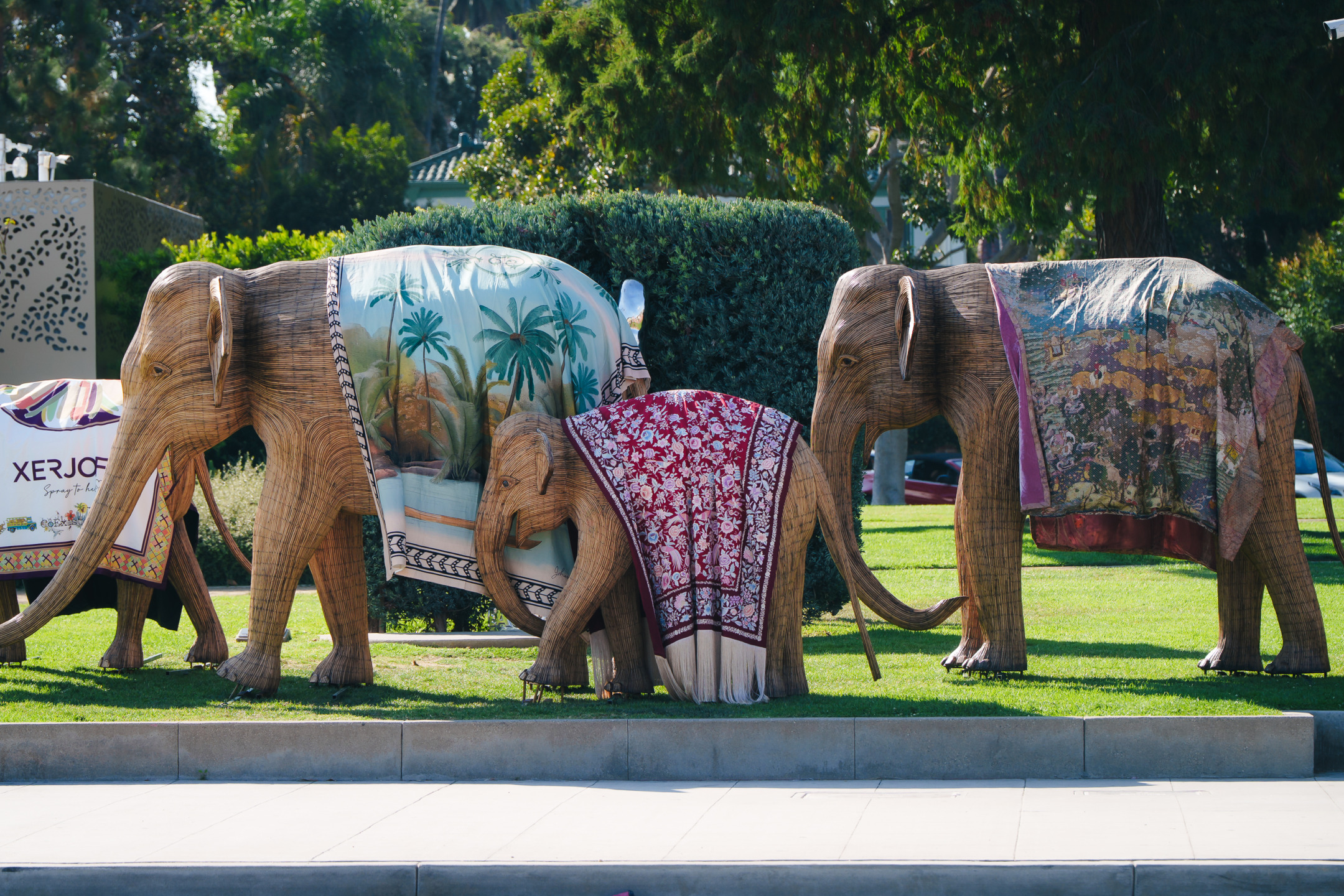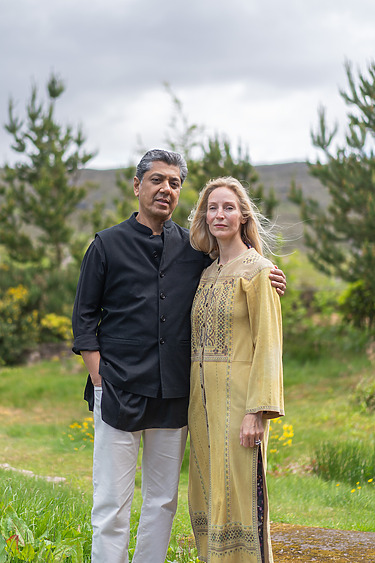Vikram Goyal Curates a Global Textile Tribute to Wildlife and Craft
After journeying across the United States, the year-long Great Elephant Migration culminates in Los Angeles with a charity auction featuring dozens of ceremonial artisan-crafted blankets to raise funds supporting human-wildlife coexistence

Last month, a herd of 100 life-sized elephant-shaped sculptures made a symbolic stampede into the Wallis Annenberg Center for Performing Arts in Beverly Hills. Envisioned by philanthropist and conservationist Ruth Ganesh, the Great Elephant Migration spent the past year on an intrepid journey across the United States, making stops in Newport, New York City, Miami Beach, Houston, Jackson Hole, and Blackfeet Nation in Western Montana’s Glacier County before arriving in Los Angeles on a striking procession decorated in the style of traditional Indian lorry art. Each elephant, sculpted from invasive lantana by Indian artisans, was draped in hand-crafted ceremonial blankets that function as vivid emblems of human-wildlife coexistence.

They also form the centerpiece of Wrapped in History, a sweeping curatorial initiative conceived by Galerie Creative Mind Vikram Goyal, the New Delhi–based designer of gloriously ornate furniture who has garnered renown for reviving repoussé metalwork into dazzling one-of-a-kind objects of collectible design. He envisioned the project as less an exhibition than a call to remember. Inspired by Indigenous communities around the world where blankets hold profound significance, the collection represents a connection to ancestors, the land, and humankind’s animal relatives, imparting stories of identity, culture, and spiritual beliefs along the way.

“Blankets are vessels of protection, identity, and story,” Goyal says. “In this context, each one becomes a monumental gesture, a way of honoring the past while materially supporting a more compassionate, interdependent future.” He invited 55 esteemed designers, fashion houses, and Indigenous communities—including Ralph Lauren, Sabyasachi, Diane von Fürstenberg, Oswald Boateng, Tarun Tahiliani, Elie Saab, the Navajo Nation, and more—to create and contribute textiles rooted in their own cultural vocabularies. “We weren’t prescribing a visual language but curating a space where narratives of identity, ritual, and memory could unfold with integrity,” Goyal continues. “Each participant was encouraged to draw from their own traditions. The unifying force wasn’t visual sameness but intention.”

Delightfully diverse and unexpected designs ensued. Some blankets preserve traditional fiber techniques, such as Heirloom Naga’s piece that employed loin-loom weaving and coded storytelling through patterns to represent land and migration—a continuation of their mission to preserve Naga backstrap weaving traditions. “It was traditional,” Goyal notes, “but it also felt political, asserting craft as cultural resistance.” Others push into conceptual territory, such as 11.11’s zero-waste indigo-dyed cotton piece that foregrounds sustainability and visible mending. “Every decision—stitch, dye, fiber—carried intention,” Goyal continues. “These were not decorative pieces. They were acts of remembrance, rooted in soil, tradition, and time. They proved that ceremonial craft doesn’t belong to the past—it’s a living force, capable of radical innovation and emotional depth.”

Goyal’s own contribution, the Dreamscape Blanket, draws from a 17th-century Rajput manuscript titled The Book of Dreams, which he describes as a “a sublime example of Indian miniature painting that blends the sacred with the surreal.” The layered cotton textile features vibrant hand-embroidered motifs such as the Gajaraja (Elephant King), Gajasimha (Elephant-Lion), and blackbuck antelope—symbols of strength, wisdom, and protection, respectively—rendered with metallic thread in collaboration with Indian master artisans.
“The Dreamscape Blanket is, in essence, a wish for protection and good fortune. It sits within Wrapped in History as both an offering and an invitation: to slow down, to look closer, and to see ritual as a living, breathing design,” Goyal says, noting how the one-of-a-kind creation reflects the initiative’s very spirit. “As these blankets journeyed over 5,000 miles, culminating in their draping over elephant sculptures, they challenged us to reimagine how we share space, culture, and meaning in a fractured world. My blanket, too, carries that intent, a dream grounded in material, made to travel, protect, and provoke reflection.”
The initiative is culminating in a live auction on Artsy (July 18–August 1), with all proceeds benefiting over 20 conservation NGOs, including Indigenous Led and the Wallis Annenberg Wildlife Crossing currently under construction in Los Angeles. For Goyal, though, the impact transcends funding. “The image of elephants draped in ceremonial blankets, standing in a global city like Beverly Hills, is deliberately poetic and subversive,” he says. “In an age of climate urgency and cultural erosion, we need new forms of activism—ones that operate not just through protest but through poetry.” Ultimately, he notes, the display centers on the healing of traditions, ecosystems, and fragmented communities. “It reminds us that activism can begin with care: the care to weave, remember, and offer something sacred back to the world.”



